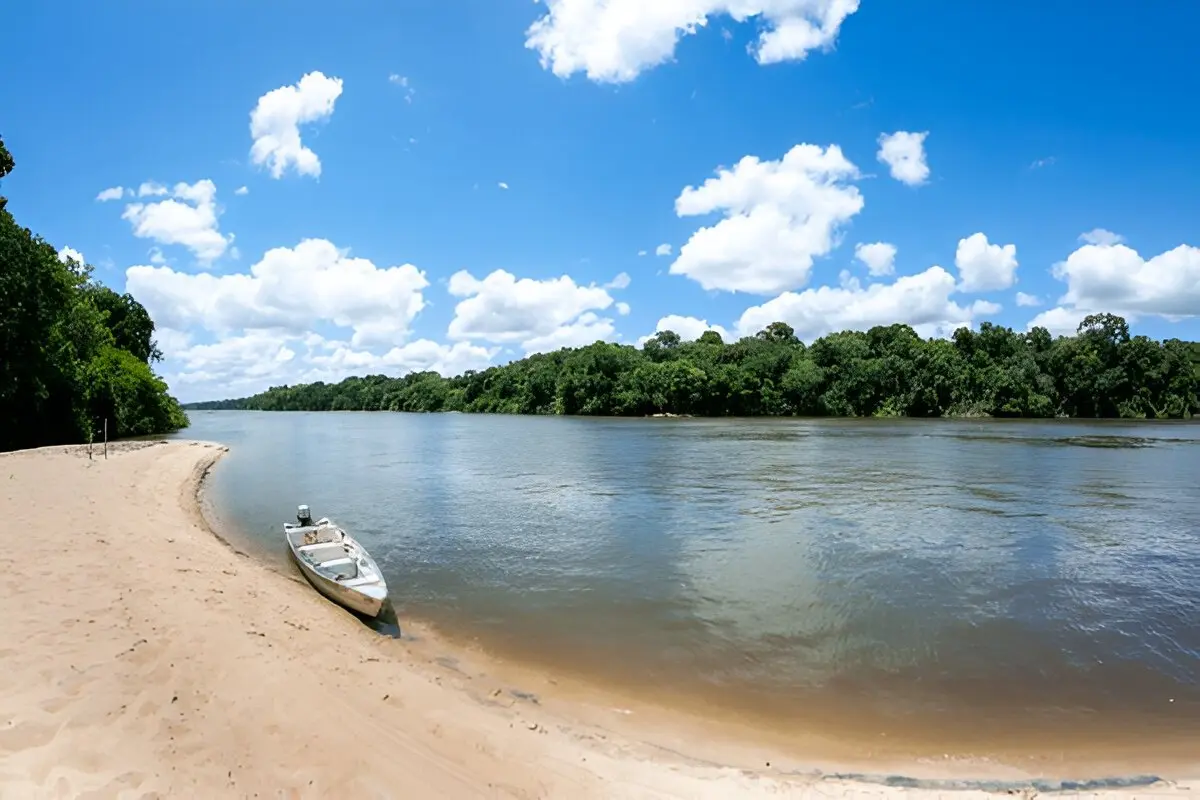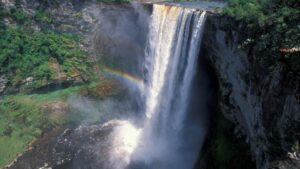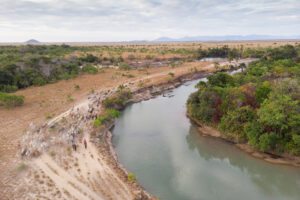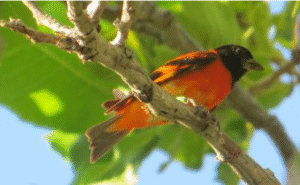The Rupununi River is a defining feature of Guyana’s Rupununi region. It carves its way through savannahs, wetlands, and rainforests before merging with the Essequibo River. This vast, biodiverse landscape has remained largely untouched, offering a glimpse into one of South America’s last great wildernesses.
Mapping the Rupununi River
The Rupununi River map reveals an intricate system of waterways stretching across southern and central Guyana. Flowing from the Kanuku Mountains, the river winds through the Rupununi Savannah, a vast grassland that transitions into dense forests before connecting with the Essequibo River. Looking at a Rupununi Guyana map, it is evident how this region forms a crucial ecological corridor between the Amazon basin and the Guiana Shield.
The Rupununi Region: A Biodiversity Hotspot
The Rupununi Savannah is a key ecological zone, home to a diverse range of species, from jaguars and tapirs to giant river otters and black caimans. The seasonal floods play a vital role in sustaining its unique wetland ecosystem, attracting numerous bird species like scarlet macaws, jabirus, and harpy eagles.
For those unfamiliar with the Rupununi pronunciation, it is typically spoken as Roo-poo-noo-nee. This region’s significance extends beyond its wildlife it is also the ancestral home of the Makushi and Wapishana Indigenous communities, who have lived along the Rupununi River for generations, relying on its waters for fishing, transportation, and agriculture.

Rupununi River Fishing and Ecotourism
One of the major attractions in this area is Rupununi River fishing, known for its diverse aquatic species, including peacock bass, payara (vampire fish), and arapaima one of the world’s largest freshwater fish. Fishing excursions, guided by Indigenous experts, offer visitors a chance to experience sustainable catch-and-release fishing in one of the most remote locations on Earth.
The region is also a rising ecotourism destination, offering activities such as canoeing, birdwatching, wildlife safaris, and cultural tours. Visitors can stay at community-run lodges, which provide an authentic experience while supporting conservation efforts and local livelihoods.
Conservation and Environmental Challenges
Despite its remote nature, the Rupununi region faces increasing environmental threats, including deforestation, mining, and climate change. Conservation initiatives led by Indigenous communities and environmental organizations aim to protect their delicate ecosystem. Keeping up with Rupununi news is essential for understanding the latest developments in conservation, tourism, and environmental policies affecting the area.
The Rupununi Savannah: Which Region Does It Belong To?
For those wondering, the Rupununi Savannah is part of Region 9 in Guyana, also known as Upper Takutu-Upper Essequibo. It is one of the country’s ten administrative regions, characterized by its rolling grasslands, scattered wetlands, and Indigenous settlements. This area plays a key role in maintaining the ecological and cultural balance of Guyana.
FAQs About the Rupununi River
What does the name Rupununi mean?
Answer: The exact meaning of Rupununi is uncertain, but it is believed to have Indigenous origins, possibly from the Makushi or Wapishana languages, referring to the river and surrounding lands.
What animals are in the jungle in Rupununi?
Answer: The Rupununi region is home to a diverse range of wildlife, including jaguars, giant anteaters, capybaras, black caimans, anacondas, and harpy eagles. The waterways also host giant river otters, arapaima, and turtles, making it one of the most biodiverse areas in South America.
How do you pronounce Rupununi?
Answer: The correct Rupununi pronunciation is Roo-poo-noo-nee.
How do I get to Rupununi?
Answer: Travellers can reach the Rupununi region by domestic flights from Georgetown to airstrips in Lethem or nearby lodges. Alternatively, an adventurous overland journey is possible via road travel from Georgetown, though it requires a 4×4 vehicle due to rugged terrain.
Final Thoughts
The Rupununi River is more than just a waterway; it is a lifeline for the wildlife, Indigenous communities, and tourism industry in Guyana. Whether exploring the Rupununi Guyana map to plan a trip, engaging in Rupununi River fishing, or keeping up with Rupununi news to stay informed about conservation efforts, this hidden gem offers adventure and discovery at every turn.
For those seeking a truly immersive experience, the Rupununi region remains one of the last great frontiers of South America, waiting to be explored and preserved for future generations.





